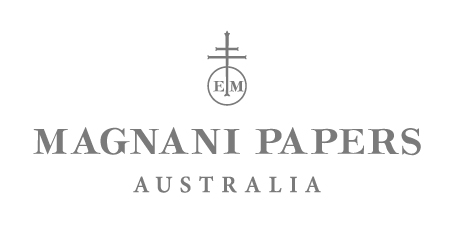Back in the day, let's say before about 1750, all papers were made by hand and were laid. They didn't even call them laid back them it was just paper. You see the paper making moulds (think fly-wire screen) were made in an incredibly time consuming fashion by laying a series of wires on top of a wooden frame. By hand.
First, a series of relatively heavy wires were strung along the length of the mould spaced about 1 mm or less apart. These were called the "laid" wires. Then a series of fine wires were placed at right angles about every 25 mm apart. These wires were finer and were woven or "chained" around the laid wires, and held everything together. The chain wires were located on top of wooden struts underneath and supported the mesh created by the interweaving of the laid and chain wires. It was very exacting work. A mesh was formed that allowed the pulp to be formed into a sheet of paper, and for the water in the pulp to drain through the mesh. What happens with a "laid" paper making mould is that you get slight variations in the thickness of the paper where the wires are. These are in effect a type of watermark, and when you hold a laid sheet up to the light you get a light and dark line effect because of the variation in the thickness of the paper. Even back then, these moulds were expensive to make. Here's a photo of a modern laid mould, but it gives you a really good idea of how they were made.

About 1750 Englishman James Whatman adapted new technology whereby fine brass wire could be woven into a mesh of consistent and accurate spacing. This fine woven mesh could be attached to a papermaking mould easily, and made it quicker and cheaper to make papermaking moulds. It also meant finer, lighter weight papers could be made. Because of the woven mesh, these papers wer called "wove".
This invention made papermaking a whole lot easier and cheaper. In 1757 John Baskerville (printer, typographer and businessman) printed his famous edition of "Virgil" on wove paper. The first paper machines, invented around 1805 made use of these woven brass meshes. Today, virtually all paper made is technically wove, laid is restricted to where we wish to imitate the papers of a past era, or perhaps to add some textural effect to drawing papers.
